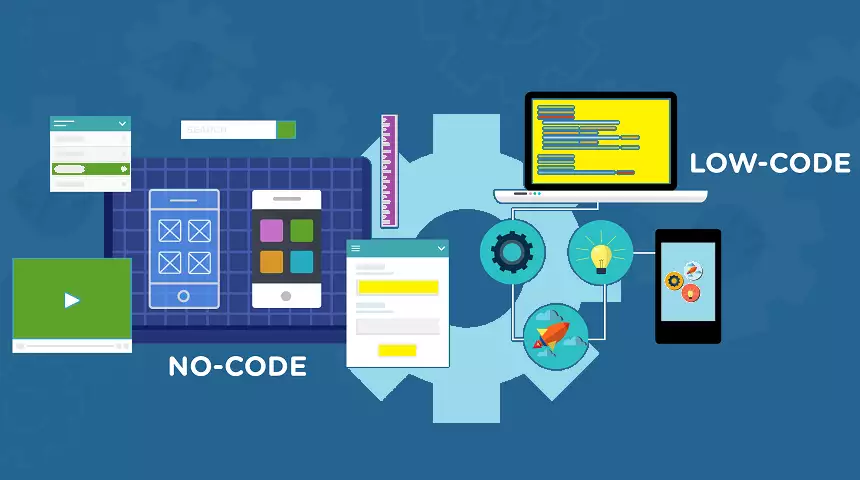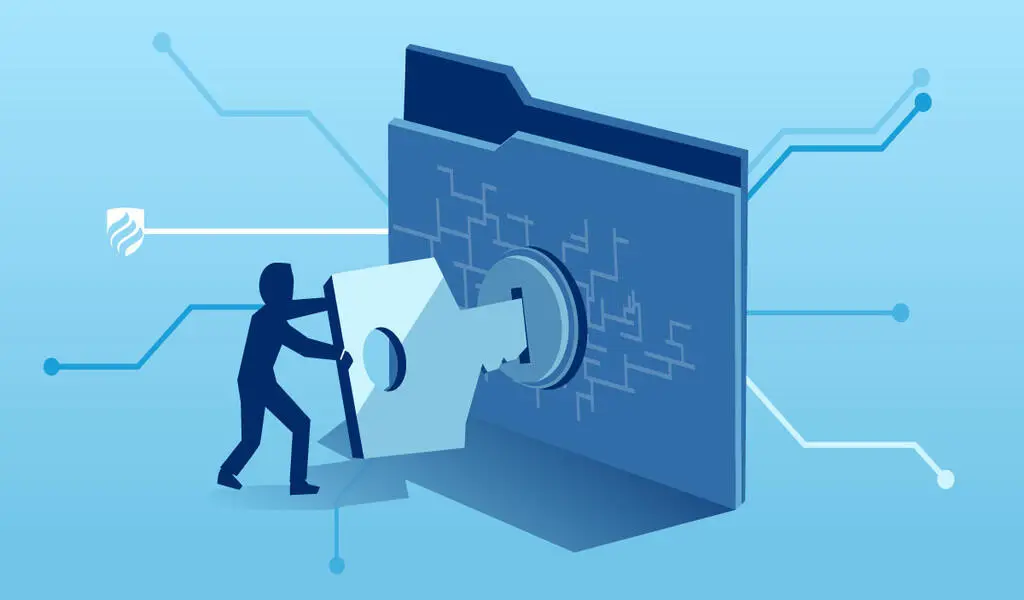Learning
6 Full Stack Development Trends to Watch in 2023
Full stack development maintains its importance in the dynamic field of information technology. Full-stack developers are experts in all web and application development facets, from design to coding to maintenance.
The demand for full-stack developers has been increasing by 35% each year. Full-stack developers must be aware of the products and shifts in their industry in 2023. This article discusses six major full-stack development trends set to rule in 2023.
Progressive Web Applications (PWAs):
Progressive Web Applications (PWAs) have seen explosive growth in the last several years, and this trend is expected to continue beyond 2023. Progressive web apps (PWAs) provide an app-like experience to consumers without requiring installation.
PWAs adjust to their viewing environment and appear appropriately on desktop computers, smartphones, and tablets. Service Workers, Web App Manifests, and Application Shell Architecture enable offline, fast page loads and seamless user interactions.
PWAs may be accessed directly from web browsers instead of app stores, which is a significant advantage. Lower learning curves increase acceptability. PWAs may be placed on the home screen and launched like mobile applications, making them easier to locate and use.
When you hire full stack development programmers, PWAs have several advantages. Full-stack developers may create them using standard web technologies like HTML, CSS, and JavaScript.
As a result, you won’t have to waste time and money creating several code bases for various platforms.
Because updates can be pushed quickly without needing users to refresh the app, PWAs are also simpler to manage and update.
Overall, PWAs are an attractive means of disseminating high-performance, cross-platform apps that offer consistent user experiences. In 2023, progressive web apps (PWAs) are predicted to play a pivotal role in the full-stack development environment as they mature and gain traction.

Serverless Architecture:
The rise of serverless architecture has been rapid, and it’s predicted to reach mainstream prominence by 2023. This architectural method frees full-stack developers from the tedium of maintaining servers and infrastructure, allowing them to put all their attention into creating code and features.
In serverless architectures, developers use tools like Google Cloud Functions, Microsoft Azure Functions, and Lambda from Amazon Web Services. Developers don’t have to worry about maintaining servers since they make smaller, self-contained functions triggered by events and run as needed. These functions automatically scale in response to changes in workload, eliminating the need for human scaling.
The flexibility and low cost of serverless architecture is a significant advantage. Applications can withstand unexpected traffic surges with automated scaling without the need to deploy and maintain extra servers. Saving money and improving productivity, developers only pay for the resources they use.
Similarly, serverless architecture encourages short iterations of development. Instead of worrying about server setups, deployments, and upgrades, developers can concentrate on building code for particular purposes. Because of its skill, development cycles may be compressed, and the rate at which new products can be introduced to the market can be increased.
The development of microservice-based architectures is another benefit of serverless computing. Software may be modularized by breaking down large programs into smaller, more manageable pieces. This modular strategy improves the code’s reusability, maintainability, and scalability.

Artificial Intelligence and Machine Learning:
In 2023, Artificial Intelligence and Machine Learning will likely have an even more significant effect on the landscape of full-stack development. Systems can now analyze information, form sound judgments, and carry out routine tasks with the help of these advancements.
AI, or artificial intelligence, studies and creates machines that mimic human intellect in performing specific tasks. ML is a branch of AI concerned with teaching computers to reason inductively, i.e., to draw conclusions or draw conclusions about new situations based on little or no prior knowledge.
TensorFlow, PyTorch, and Scikit-learn are some of the most well-known ML frameworks that full-stack engineers should be conversant with. With these frameworks, developers can access a library of pre-made algorithms and models. The instruments above allow programmers to implement NLP, CV, RS, and PA features.
Major cloud platforms such as Google Cloud AI, Amazon Rekognition, and Microsoft Azure Cognitive Services all provide AI-powered APIs and services that developers may use in addition to ML frameworks. These services offer developers pre-trained models and APIs for incorporating AI capabilities into applications without requiring deep knowledge of ML.

Low-Code/No-Code Development:
The emergence of Low-Code/No-Code (LC/NC) development has made it possible for people with less knowledge of computer programming to build useful apps. As more businesses look to optimize their application development processes and hire full stack development coders, LC/NC development is predicted to receive even more traction in 2023.
Low-code platforms have drag-and-drop and visual tools that make it easy to assemble apps with little or no writing. Users of so-called “No-Code” platforms can construct apps without touching a line of code by depending exclusively on graphical interfaces and configuration settings.
LC/NC development has several benefits, including faster application development, flexibility, and less need for technical skills. It lets business users participate in application development so that IT staff may concentrate on higher-level responsibilities.
Better alignment between technology and business goals is achieved, and iterations may be completed more quickly due to increased cooperation between business and IT teams.
Such platforms include declarative programming, where users describe outcomes, and the platform automatically generates code. Developers may concentrate on business challenges rather than coding by streamlining and obscuring technical aspects.
The LC/NC paradigm has its limits, too. It may only work for situations or applications requiring tweaking and integration with existing infrastructure. Unchecked scalability and performance issues might also arise.

Blockchain technology
Blockchain Technology:
In 2023, blockchain technology will likely have an even more significant influence on the entire stack development environment. Blockchain is a distributed ledger system that eliminates the requirement for trusted third parties in financial transactions.
Blockchain’s immutability is one of its most appealing qualities when you hire dedicated developers. Once a transaction has been added to the blockchain, it is impossible to change or tamper with, ensuring high data integrity and trust. This makes blockchain an excellent solution for industries like finance, healthcare, and logistics that rely on safe and verified transactions.
In 2023, full-stack engineers should learn about blockchain platforms like Ethereum, Hyperledger, and Corda and intelligent contract development frameworks such as Solidity. These frameworks allow programmers to build DApps and smart contracts that run independently on the blockchain.
Blockchain technology also allows for the creation of trustless and decentralized networks. Blockchain encourages peer-to-peer connections and minimizes dependency on centralized authority by eliminating the need for intermediaries. This can improve productivity, save costs, and tighten safety measures.
In addition, blockchain may change sectors by making possible novel business models and upending established procedures. Identity management, IP protection, election security, and supply chain visibility are some problems it can solve.
Full-stack developers, however, should be aware of the blockchain’s shortcomings, such as scalability, interoperability, and legal concerns. These problems have answers and frameworks, and they are improving as technology advances.

Cybersecurity and Privacy:
Data security and privacy concerns have risen to the forefront for full-stack developers in 2023. Developers must give security and privacy top billing in their apps in light of the increasing number of cyber threats and privacy breaches.
When you hire dedicated developers, they must understand common cybersecurity flaws and risk mitigation strategies. Input validation, authentication and authorisation procedures, and secure data storage and transfer are all examples of safe coding standards that developers should use. Regular vulnerability assessments and code reviews are vital to detect and fix any possible security issues.
Privacy safeguards are equally vital. Developers guarantee that user data is gathered, kept, and processed by privacy requirements such as the General Data Protection Regulation (GDPR). Implementing privacy by design concepts like data reduction and user consent methods is crucial.
Additionally, developers may be vigilant about cybersecurity risks and take proactive actions to protect their apps. To find and fix security flaws, you need strong authentication, encryption for critical data, and constant monitoring and recording of system activity.
Working with specialists and following industry standards and frameworks like the OWASP Top Ten and the NIST Cybersecurity Framework may dramatically enhance an application’s security.
Conclusion on Full Stack Development
As full stack development continues to change, workers in this area must keep up with the latest trends to stay competitive. Hire full stack development professionals who are well-versed in these evolving areas is crucial for businesses to thrive in 2023.
Progressive Web Applications, Serverless Architecture, AI/ML, Low-Code/No-Code Development, Blockchain Technology, and Cybersecurity and Privacy will transform the full-stack development environment.
Businesses should guarantee they have a competent staff that can provide innovative solutions in the fast-paced technological industry by employing professional personnel that embrace and adapt to current trends.

Learning
First-Time Buyer’s Guide to the UK Property Market

Entering the UK property market as a first-time buyer can feel both exciting and daunting. The process is filled with potential pitfalls and complex decisions, but with the right guidance, it can be navigated smoothly. The estate agents in Yorkshire demystify the journey from the initial decision to buy a home to the moment you step over the threshold of your new property.
Understanding Your Financial Position
The first and perhaps most crucial step in the home-buying process is understanding your financial situation. This includes assessing your savings, income, and current debts. Here’s how you can prepare:
1. Deposit: Generally, you’ll need at least 5% of the property price as a deposit, though aiming for 10% or more can provide better mortgage rates.
2. Income and Expenses: Use a budget planner to assess your monthly income against your expenses. This will help you understand how much you can afford in monthly mortgage repayments.
3. Credit Score: Lenders will evaluate your credit score to determine your mortgage eligibility. So it’s important to have a good credit score, and you should work on it if required.
4. Mortgage Options: Speak to a mortgage advisor to understand different types of mortgages, such as fixed-rate, variable-rate, and help-to-buy schemes.
Getting a Mortgage Agreement in Principle
A Mortgage Agreement in Principle (AIP) is a statement from a lender indicating how much they’ll likely lend you. You will be a more attractive buyer with an AIP as it shows sellers you’re serious and financially prepared.
Deciding What You Want
Before you start viewing properties, it’s essential to know what you’re looking for. Consider the following factors:
1. Location: Proximity to work, schools, public transport, and amenities are key. Research neighbourhoods to find the best fit for your lifestyle.
2. Property Type: Decide whether you want a flat, terraced house, semi-detached, or detached property. Each has its pros and cons.
3. Must-Haves: Make a list of non-negotiables, such as the number of bedrooms, garden size, and parking facilities.
4. Future Proofing: Consider your future needs. Are you planning to start a family? Do you need space for a home office?
Starting the Property Search
With a clear idea of what you’re looking for, you can begin your property search. Here are some tips:
1. Use Online Portals: Websites like Rightmove, Zoopla, and OnTheMarket are excellent starting points. Set up alerts to get notified of new listings that meet your criteria.
2. Visit Estate Agents: Register with local estate agents who can provide insights into the market and inform you of new properties before they’re listed online.
3. Attend Viewings: Don’t rush this part. Visit several properties to get a feel for what’s available in your price range.
Making an Offer
Once you find a property you love, it’s time to make an offer. Here’s how to approach it:
1. Research: Check the selling prices of similar properties in the area to gauge a fair offer.
2. Negotiate: Don’t be afraid to negotiate. The starting point is most usually the asking price.
3. Conditions: You might include conditions in your offer, such as the inclusion of certain fixtures or a specific moving date.
The Legal Process
If your offer is accepted, the legal process begins. You’ll need a solicitor or licensed conveyancer to handle the legalities. Here’s what to expect:
1. Conveyancing: This is the legal transfer of property ownership. Your solicitor will handle this, including conducting searches, dealing with the Land Registry, and transferring the funds.
2. Surveys and Inspections: Arrange for a property survey to check for structural issues. There are different types of surveys, from basic condition reports to full structural surveys.
3. Mortgage Finalisation: Once the survey is complete and satisfactory, your mortgage can be finalised.
4. Exchange of Contracts: This is when the sale becomes legally binding. You’ll pay your deposit at this stage.
5. Completion: On the agreed completion date, the remaining money is transferred, and you receive the keys to your new home.
Moving In
Moving day can be hectic, but planning can ease the stress:
1. Hire a Removal Company: Book a reliable removal company well in advance. Discover the best deals by getting quotes from multiple companies.
2. Pack Strategically: Label your boxes by room and keep essential items accessible.
3. Notify Utilities and Change Address: Inform your utility providers of your move date and update your address with banks, the DVLA, and other important institutions.
Settling In
Get settled. Introduce yourself to the neighbours, familiarise yourself with the local area, and really start to make the place your own.
Here are a few final tips:
1. Safety Checks: Make sure that your smoke alarms and carbon monoxide detectors are working, and make sure that you know where the gas and electricity meters are located.
2. Maintenance Plan: Keep a record of the smooth functioning of your new home with a maintenance schedule, complete with regular checks and seasonal tasks.
3. Personal Touches: Add personal touches to make the space feel like home. This can be from putting up family photos or redoing the decoration in your rooms.
Conclusion
Buying your very first home in the UK is most definitely a milestone, difficult and full of challenges but rewarding in the end. Such a philosophy guides you in understanding finances and knowing what you want to achieve from detailed research, and seeking professional advice that confidently helps you navigate the property market. Yes, the journey may have its hurdles, but in the end—owning your own home—the reward will be worth the effort. Welcome to your new chapter!
SEE ALSO: Conquer the Chaos: Hacks to Clean Your Home in Half the Time
Learning
5 Health Benefits of Regular Pedicures

There’s nothing quite like a pedicure to keep your feet looking and feeling their best, but did you know that pedicures do more than simply enhance the appearance of your feet? Many people don’t realize that regular pedicures can come with a wide range of health benefits that can promote the well-being of your feet, so here are some ways that your routine pedicure keeps both your toenails and feet in the best condition possible!
Smoother Skin
One of the biggest misconceptions about pedicures is that they only cater to and look after your toenails. While you’ll definitely be leaving each session with a fresh coat of nail polish, your pedicure can also do wonders for the health of your skin. Aside from trimming and shaping your nails and cuticles, you’ll notice that your nail technician also dedicates a few steps to the skin of your feet.
After inspecting your feet and looking for any issues or imperfections that may need to be addressed, your technician will work on an exfoliating scrub to remove any dead skin cells. This step may also be aided by a foot file, which can be used to buff away any calluses and other problem areas manually.
Softer Skin
After your nail technician addresses all the problem areas of your feet and removes any unwanted dead skin cells, he or she will often massage in a moisturizing product, such as lotion, cream, or butter, to ensure that your skin is properly moisturized. These products contain skin-loving ingredients that will ensure that your feet have everything they need to look and feel their best so that you can walk out of your pedicure with a renewed sense of confidence.
Healthier Nails
After your pedicure session, your nails will not only look better due to the fresh coat of nail polish, but they’ll also be healthier and stronger. This is because your nail technician takes their time to ensure that your nails are properly looked after through steps that include deep cleaning, nail trimming, nail filing, and cuticle care. All of these things work together to prevent issues like ingrown nails from occurring, all the while improving the appearance of your nails.
Increased Blood Circulation
While the specific steps included in your pedicure will depend on the beauty salon, most pedicures will have a massage step somewhere in the mix. One of the often overlooked benefits of these massages is the increased blood circulation, which can deliver more nutrients and oxygen to your feet and nails, promoting their health and appearance. Aside from that, better blood flow means reduced tension and soreness, as well as better distributed heat throughout your body.
Reduced Infections
A significant amount of dirt and bacteria can build up on your feet without you even realizing it, but pedicures can be a great way to prevent these from happening in the first place. The exfoliation step of a pedicure removes dead skin cells as well as all the debris that may have accumulated underneath, and the deep cleaning of your toenails and cuticles also gets rid of any impurities that may have slipped beneath them, which can stop infections from happening.
These are some of the many health benefits that you can look forward to at your next pedicure appointment. However, it’s worth noting that you need to book regular sessions to truly reap all the rewards. This can be difficult, especially when you don’t feel like driving to your nearest nail salon after a long day, but the good news is that you can enjoy the salon experience in the comfort of your own home with a home pedicure service.
Learning
Commercial Boiler Installation Services London

For businesses in the bustling city of London, having a reliable heating system is crucial. Whether you’re opening a new office, expanding your current premises, or simply upgrading an outdated system, commercial boiler installation services for businesses in London are essential to ensure your operations run smoothly and efficiently. Proper installation and maintenance of commercial boilers can make a significant difference in energy efficiency, cost savings, and the overall comfort of your workspace.
The Importance of Professional Installation
When it comes to installing a commercial boiler, professional expertise is paramount. Here’s why:
- Efficiency and Performance: Professional installation ensures that your boiler operates at peak efficiency, reducing energy consumption and lowering utility bills. A well-installed boiler can effectively meet the heating demands of your business without unnecessary energy waste.
- Safety: Commercial boilers are complex systems that require precise installation to operate safely. Professional installers adhere to stringent safety standards and regulations, minimizing the risk of accidents and ensuring the safety of your employees and premises.
- Compliance with Regulations: Commercial properties are subject to various building codes and regulations. Professional installers are well-versed in these requirements and ensure that your boiler system complies with all local laws and standards.
- Longevity and Reliability: Proper installation is critical to the longevity and reliability of your boiler. A professional installation can prevent common issues such as leaks, pressure problems, and system failures, ensuring that your boiler runs smoothly for years to come.
Key Considerations for Commercial Boiler Installation
When planning for a commercial boiler installation, several factors need to be considered:
- Type of Boiler: The type of boiler you choose will depend on your business’s specific needs. Options include gas boilers, oil boilers, and electric boilers, each with its own set of advantages. Consulting with a professional can help you determine the best choice for your business.
- Sizing and Capacity: The boiler’s size and capacity must match the heating demands of your commercial space. An undersized boiler will struggle to meet your needs, while an oversized one will lead to inefficiencies and higher costs.
- Location: The placement of your boiler affects its efficiency and accessibility for maintenance. Professional installers can help you choose the optimal location for your boiler.
- Integration with Existing Systems: If you’re upgrading or replacing an existing boiler, it’s essential to ensure compatibility with your current heating system. Professional installers can seamlessly integrate the new boiler with your existing setup.
Choosing the Right Installation Service

Selecting the right installation service provider is crucial to the success of your boiler installation project. Consider the following when making your choice:
- Experience and Expertise: Look for a provider with a proven track record in commercial boiler installations. Experienced installers can handle the complexities of commercial systems and provide high-quality workmanship.
- Reputation: Check reviews and testimonials from previous clients to gauge the provider’s reliability and customer satisfaction.
- Comprehensive Services: Choose a provider that offers a full range of services, including installation, maintenance, and repair. This ensures that all your boiler needs are met by a single, trusted source.
In London, ROWLEN is a reputable name known for delivering top-notch commercial boiler installation services. Their team of experts is dedicated to providing efficient, safe, and compliant installations tailored to the unique needs of businesses.
Conclusion
Investing in professional commercial boiler installation services for businesses in London is essential for ensuring efficiency, safety, and long-term reliability. By choosing an experienced and reputable service provider like ROWLEN, you can rest assured that your heating system will be installed correctly and maintained to the highest standards. Proper installation not only enhances the performance of your boiler but also contributes to the overall comfort and productivity of your business environment.
SEE ALSO:
-

 News4 years ago
News4 years agoLet’s Know About Ultra High Net Worth Individual
-
Entertainment2 years ago
Mabelle Prior: The Voice of Hope, Resilience, and Diversity Inspiring Generations
-
News11 years ago
Enviromental Groups Tell Mekong Leaders Lao Dam Evaluation Process Flawed
-

 Health4 years ago
Health4 years agoHow Much Ivermectin Should You Take?
-

 Tech2 years ago
Tech2 years agoTop Forex Brokers of 2023: Reviews and Analysis for Successful Trading
-

 Lifestyles3 years ago
Lifestyles3 years agoAries Soulmate Signs
-

 Entertainment3 years ago
Entertainment3 years agoWhat Should I Do If Disney Plus Keeps Logging Me Out of TV?
-

 Health3 years ago
Health3 years agoCan I Buy Ivermectin Without A Prescription in the USA?